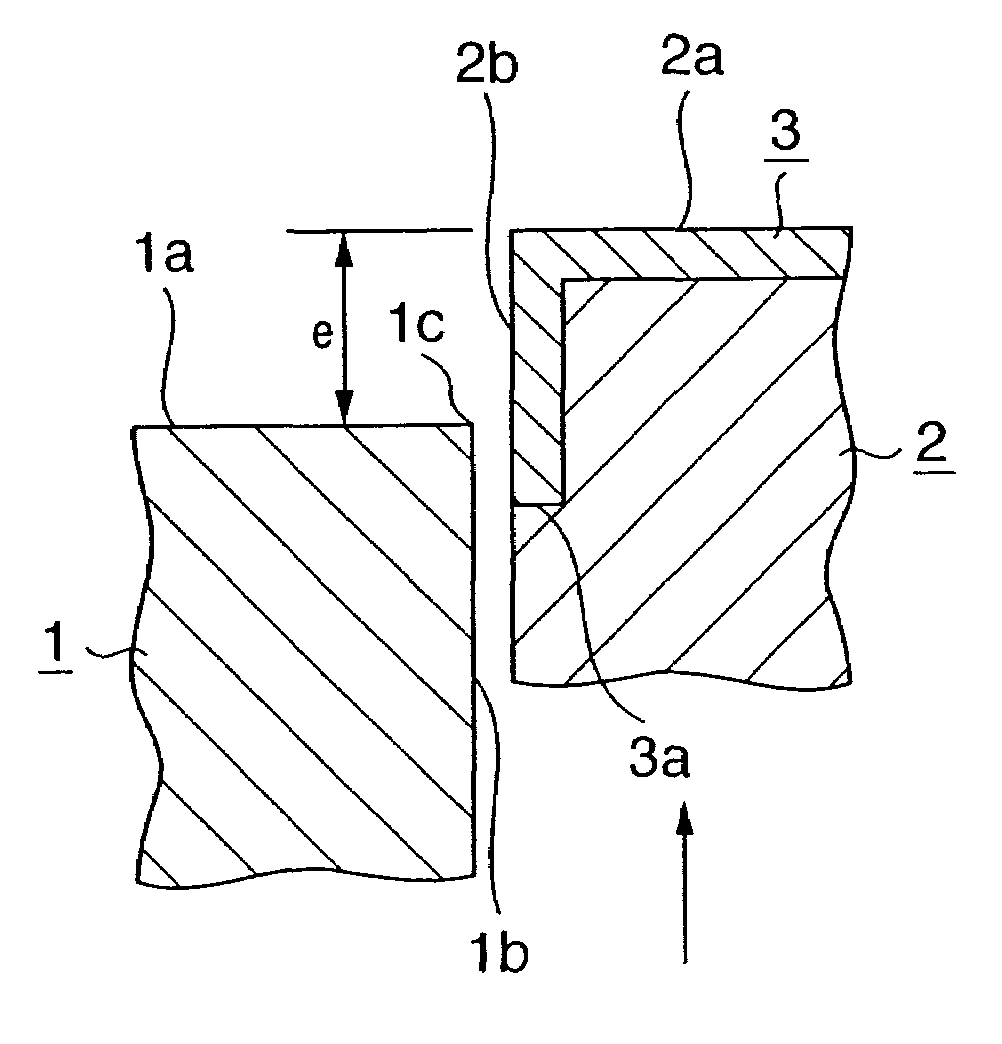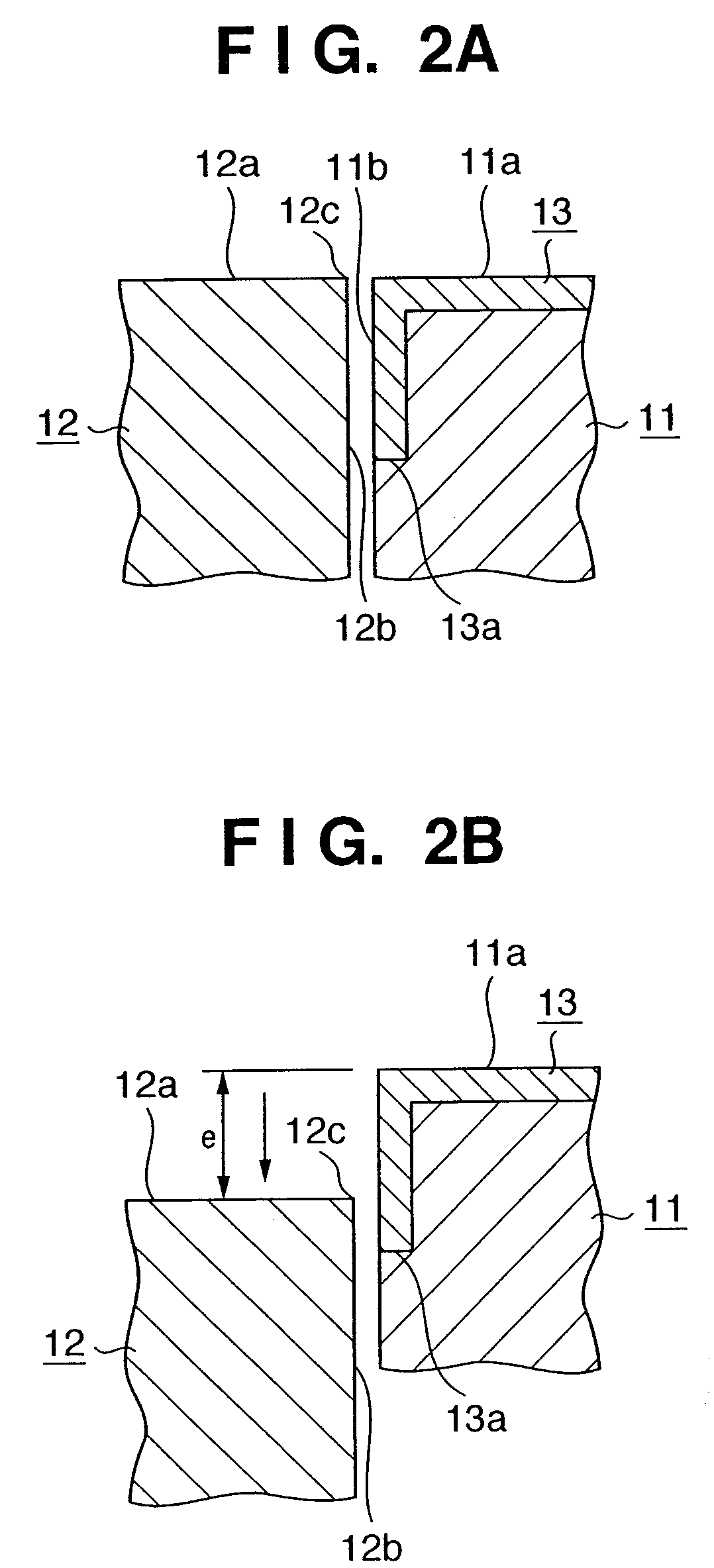Injection mold
a technology of injection molds and injection molds, which is applied in the field of injection molds, to achieve the effect of improving the durability of injection molds and increasing the peeling resistance of heat insulating coatings
- Summary
- Abstract
- Description
- Claims
- Application Information
AI Technical Summary
Benefits of technology
Problems solved by technology
Method used
Image
Examples
experimental example 1
[0057]An injection mold having an ejector pin as a sliding member was used in injection molding an injection molding product by changing the combination of the arrangement of the ejector pin and the arrangement of an adjacent member, and the number of times of injection molding before a heat insulating coat peeled was checked. The results are shown in FIGS. 14 and 15.
[0058]Note that as the arrangement of the sliding member and the arrangement of the adjacent member in Examples 1 to 35 shown in FIG. 14, the arrangements of the sliding members shown in FIGS. 1, 4, 5, 6, 7, and 10 were used.
[0059]Note also that in each of Examples 1 to 35, a 0.1 mm thick polyimide vacuum deposited polymerized coat (manufactured by VACUUM METALLURGICAL CO., LTD.) was used as the heat insulating coat, and a 0.001 mm thick CrN coat was used as the protective coat.
[0060]FIG. 12 is a schematic partial sectional view of an injection mold used in Comparative Example 1. The injection mold of this comparative e...
experimental example 2
[0066]The combination of the sliding member (FIG. 8) and the adjacent member (FIG. 1) in Example 11 described above was used to check the number of times of injection molding before the heat insulating coat peeled by changing the material of the protective coat. The results are shown in FIG. 16. Note that electroless plating, physical vapor deposition, and chemical vapor deposition were used as coat formation methods, and thickness of the protective coat was set to 1 μm. As shown in FIG. 16, in each of Examples 37 to 44, 10,000 times or more of injection molding were necessary before the heat insulating coat peeled, indicating high durability.
[0067]In each of the above embodiments as described above, the peeling resistance of the heat insulating coat is high, and this improves the durability. Therefore, high-quality injection molded products having excellent outer appearance can be stably molded.
PUM
| Property | Measurement | Unit |
|---|---|---|
| thick | aaaaa | aaaaa |
| thick | aaaaa | aaaaa |
| thickness | aaaaa | aaaaa |
Abstract
Description
Claims
Application Information
 Login to View More
Login to View More - R&D
- Intellectual Property
- Life Sciences
- Materials
- Tech Scout
- Unparalleled Data Quality
- Higher Quality Content
- 60% Fewer Hallucinations
Browse by: Latest US Patents, China's latest patents, Technical Efficacy Thesaurus, Application Domain, Technology Topic, Popular Technical Reports.
© 2025 PatSnap. All rights reserved.Legal|Privacy policy|Modern Slavery Act Transparency Statement|Sitemap|About US| Contact US: help@patsnap.com



